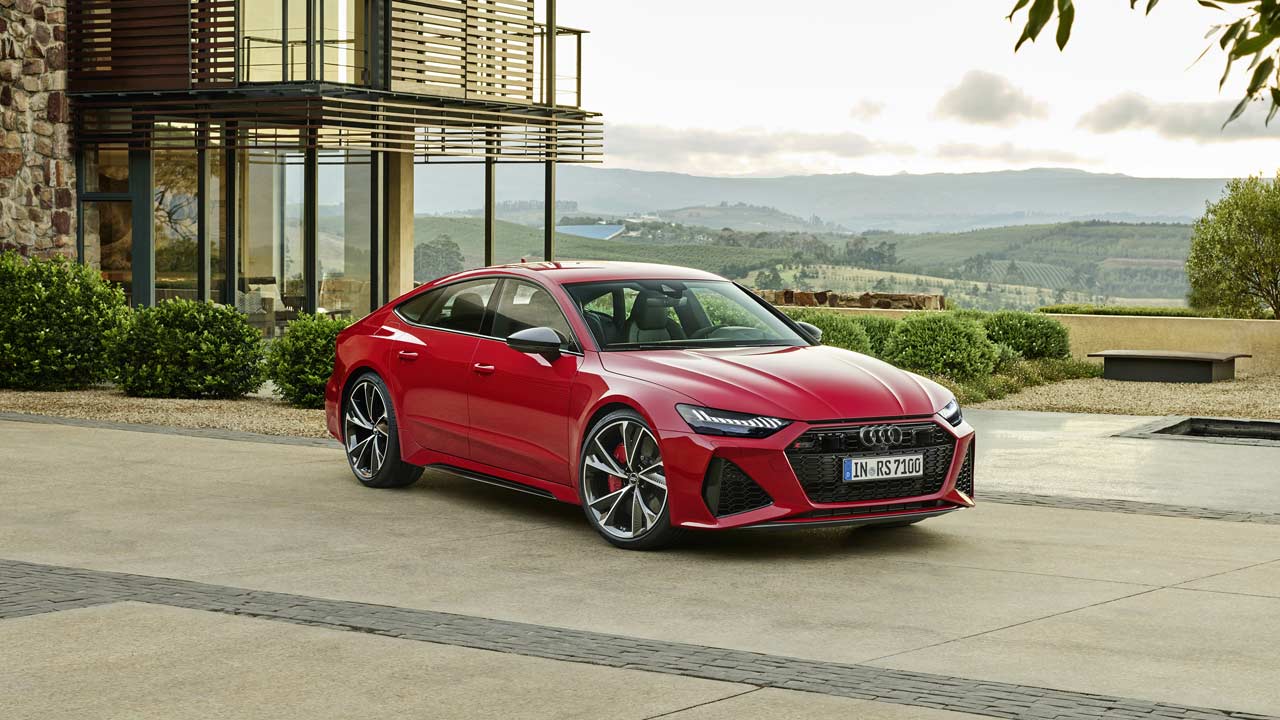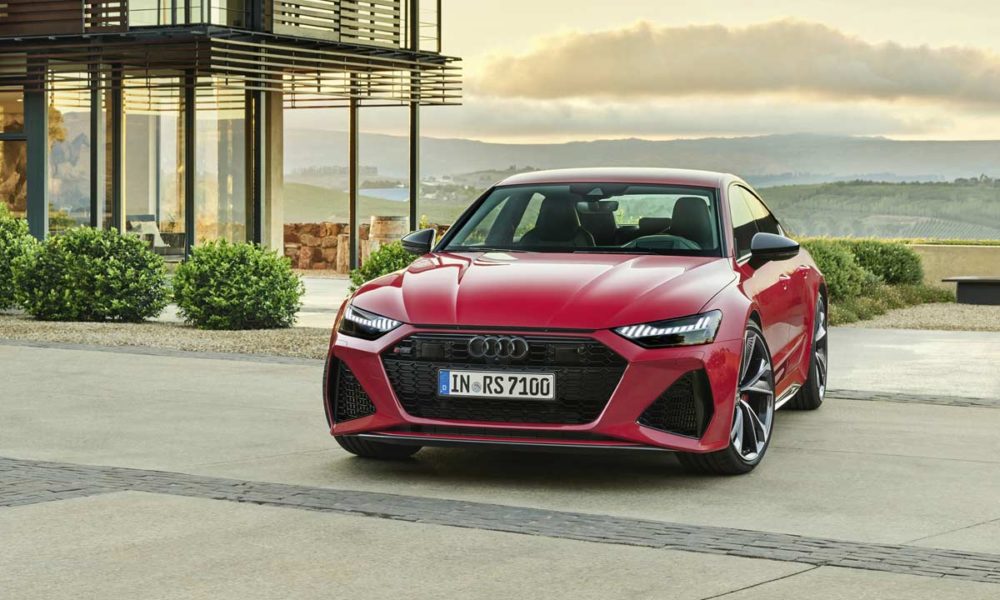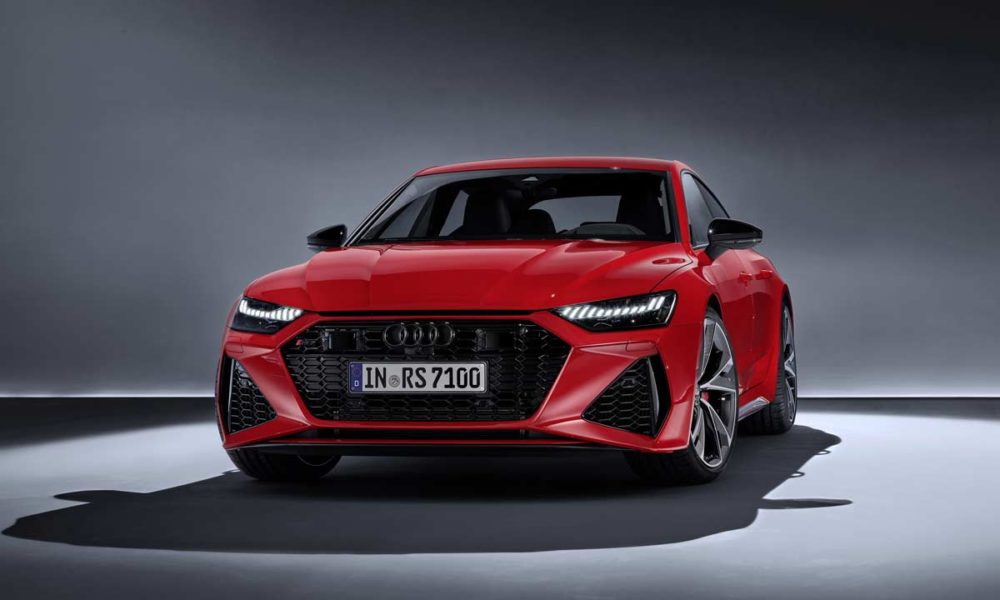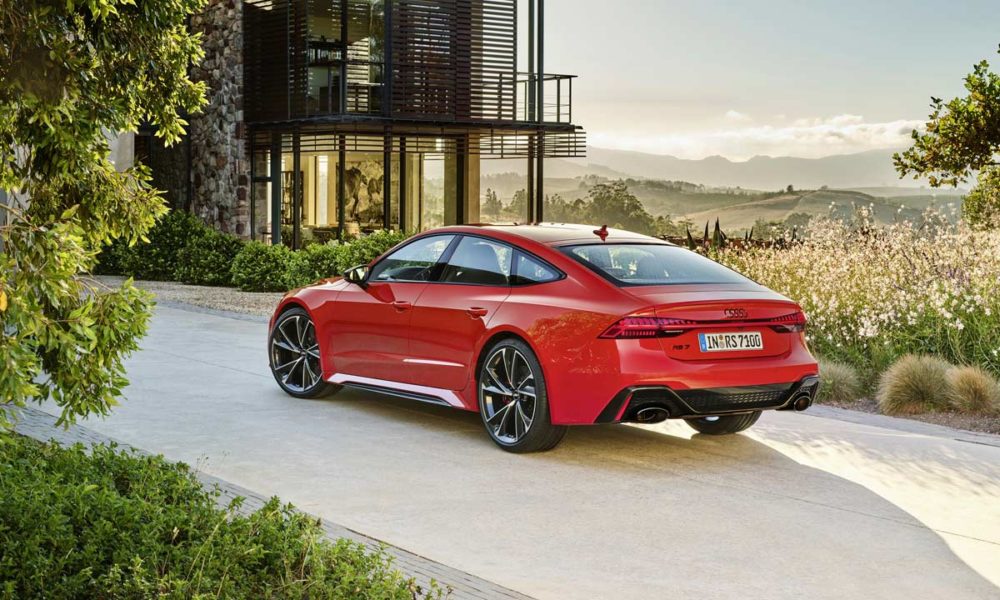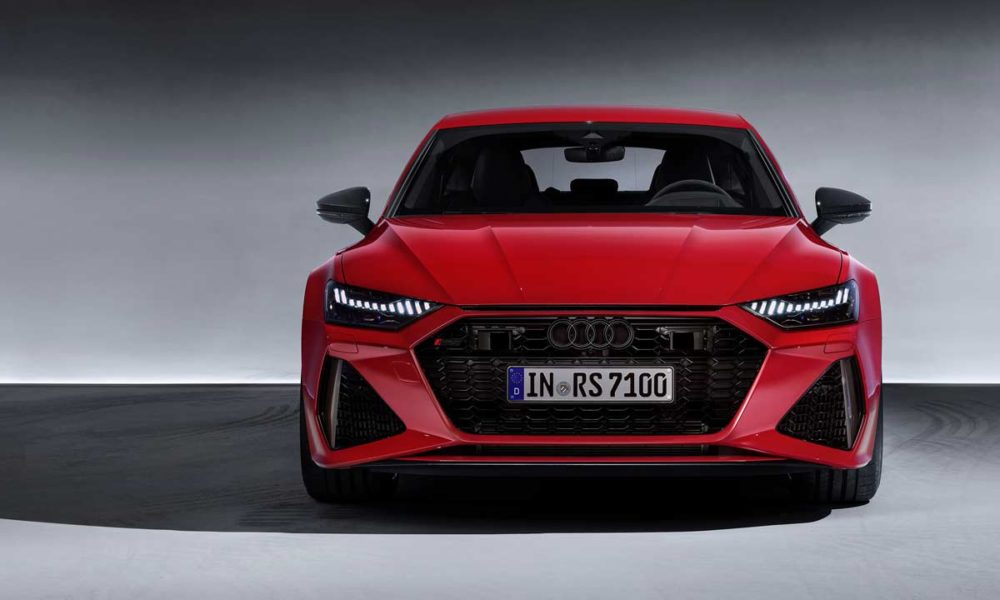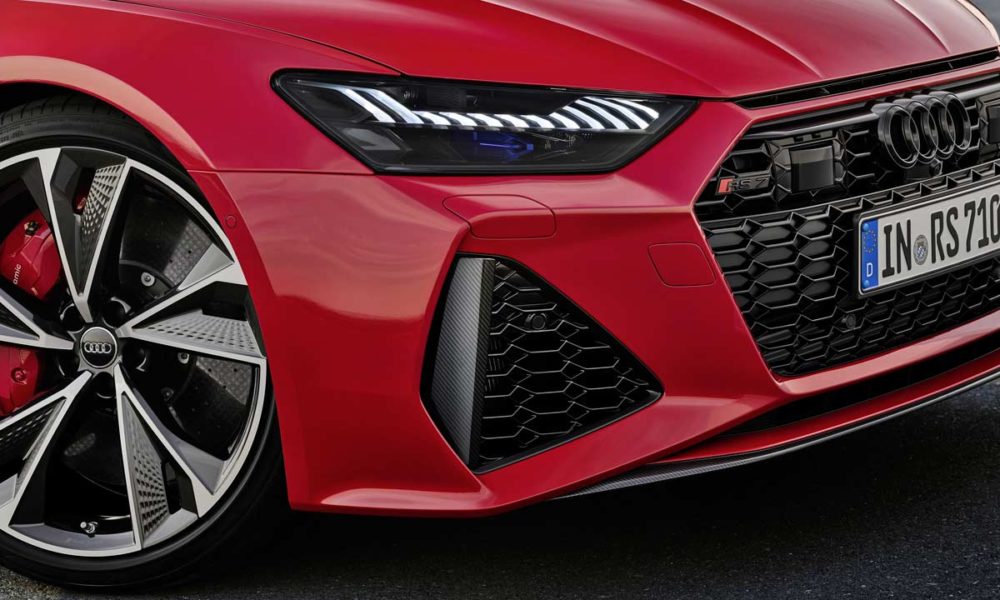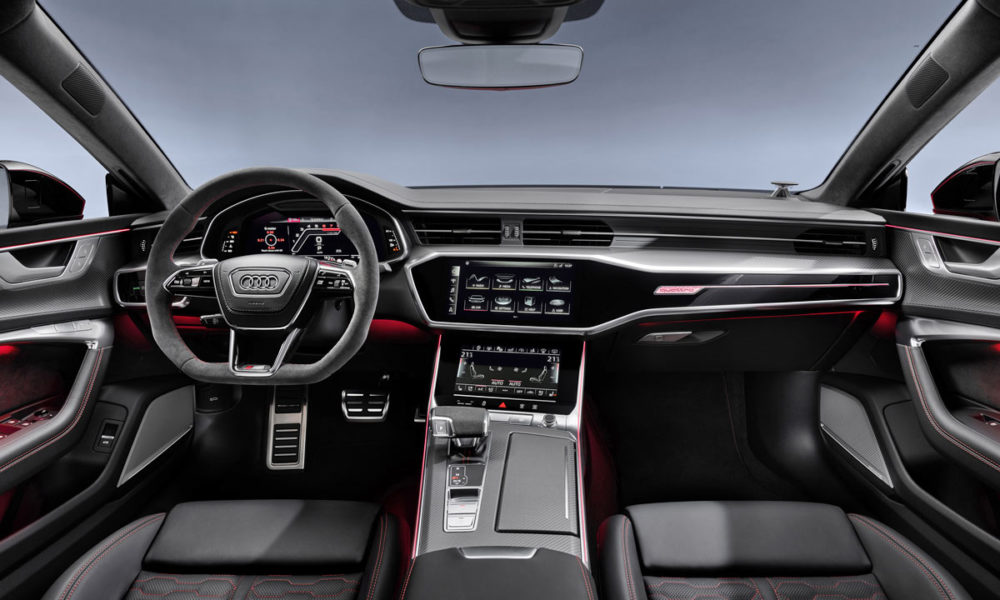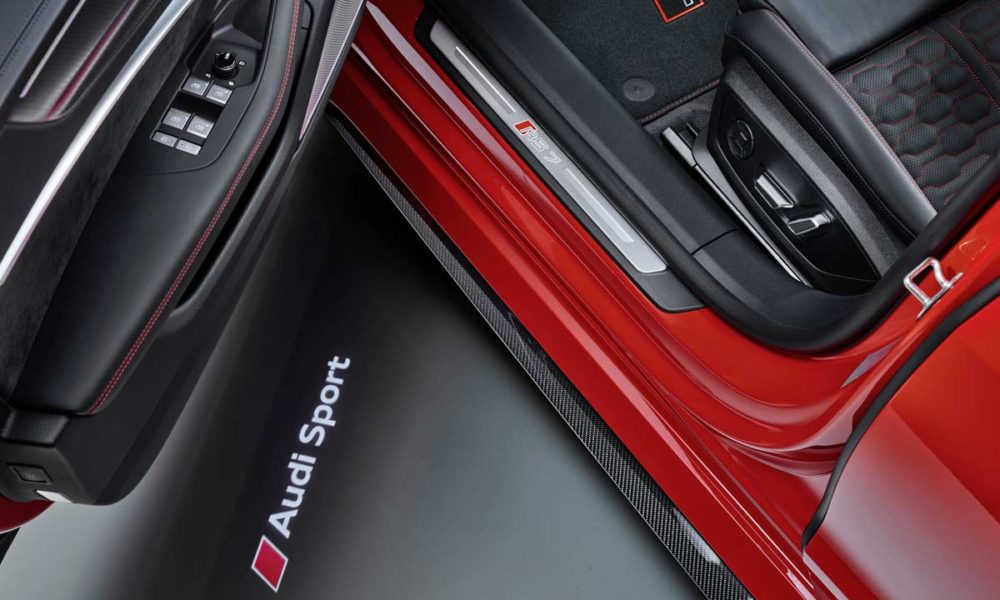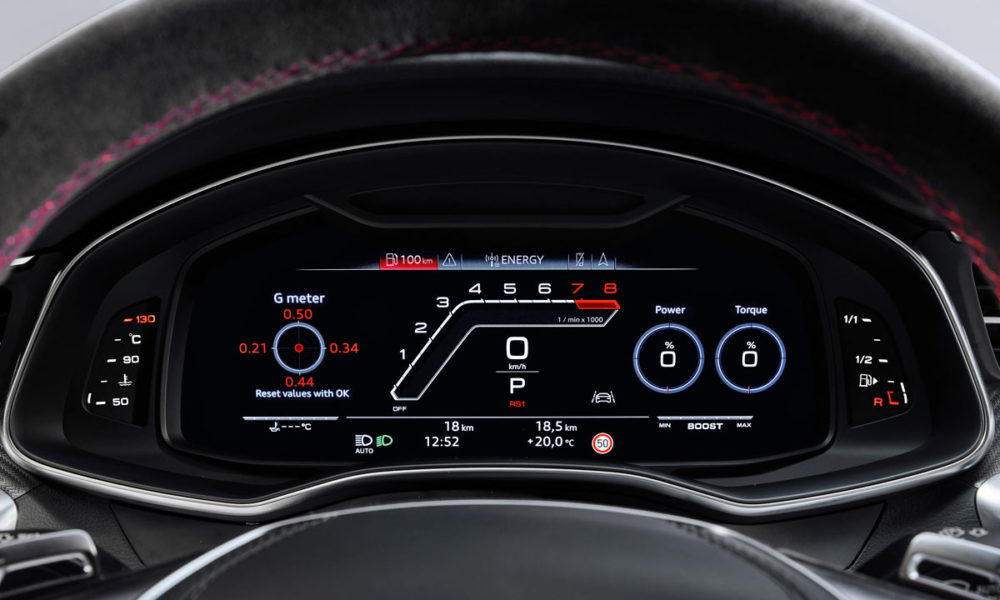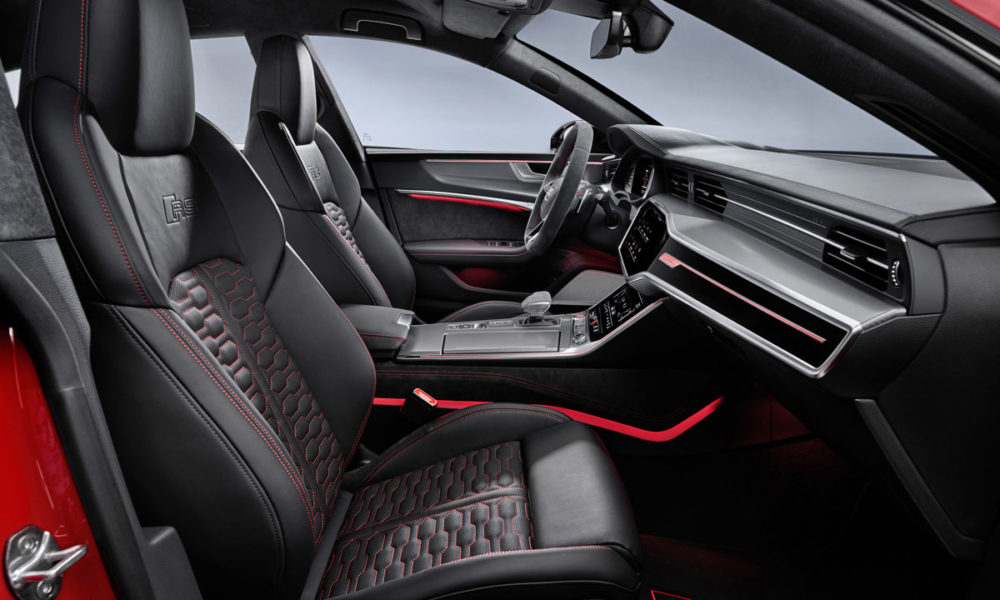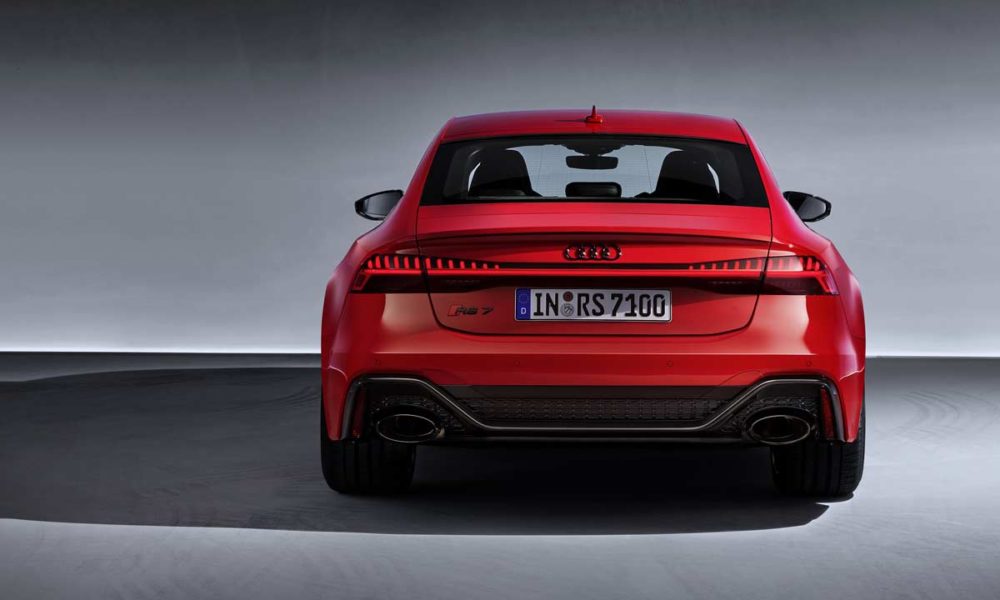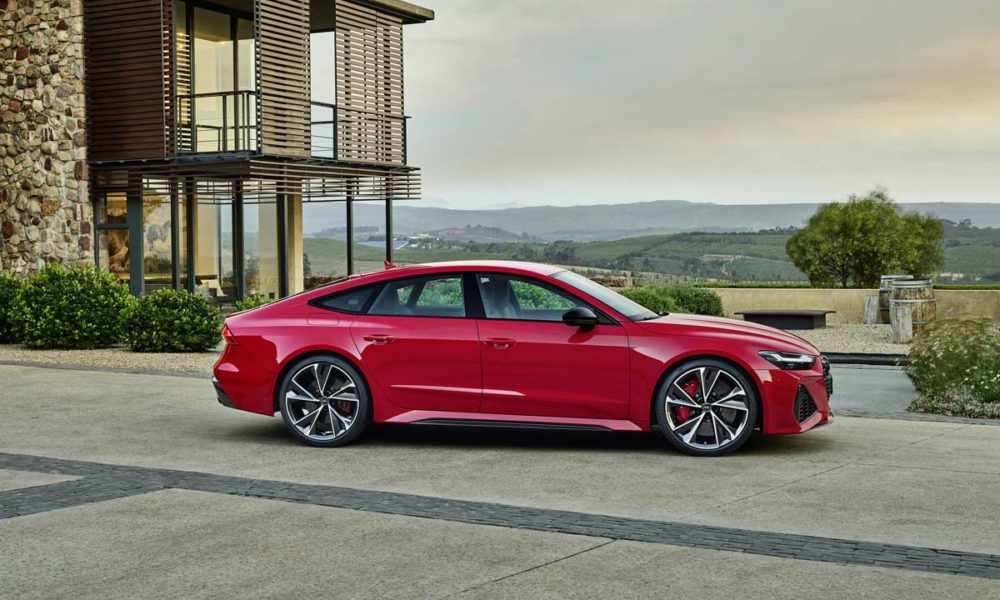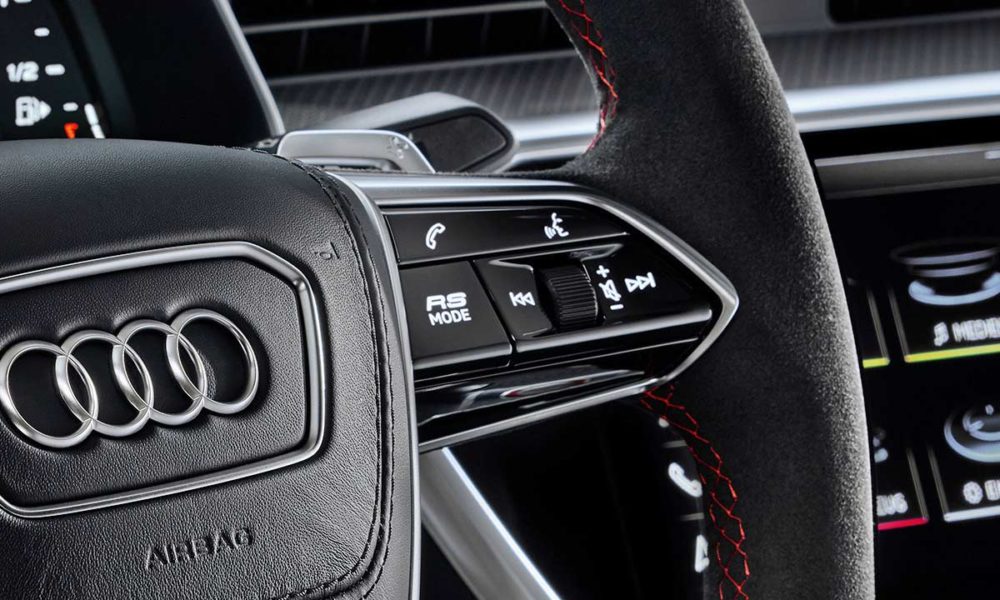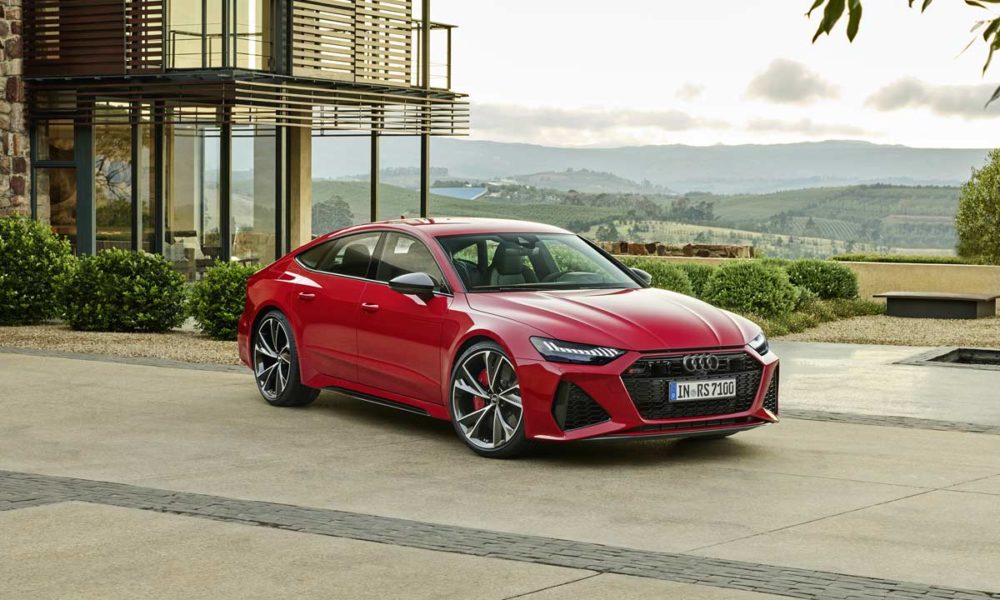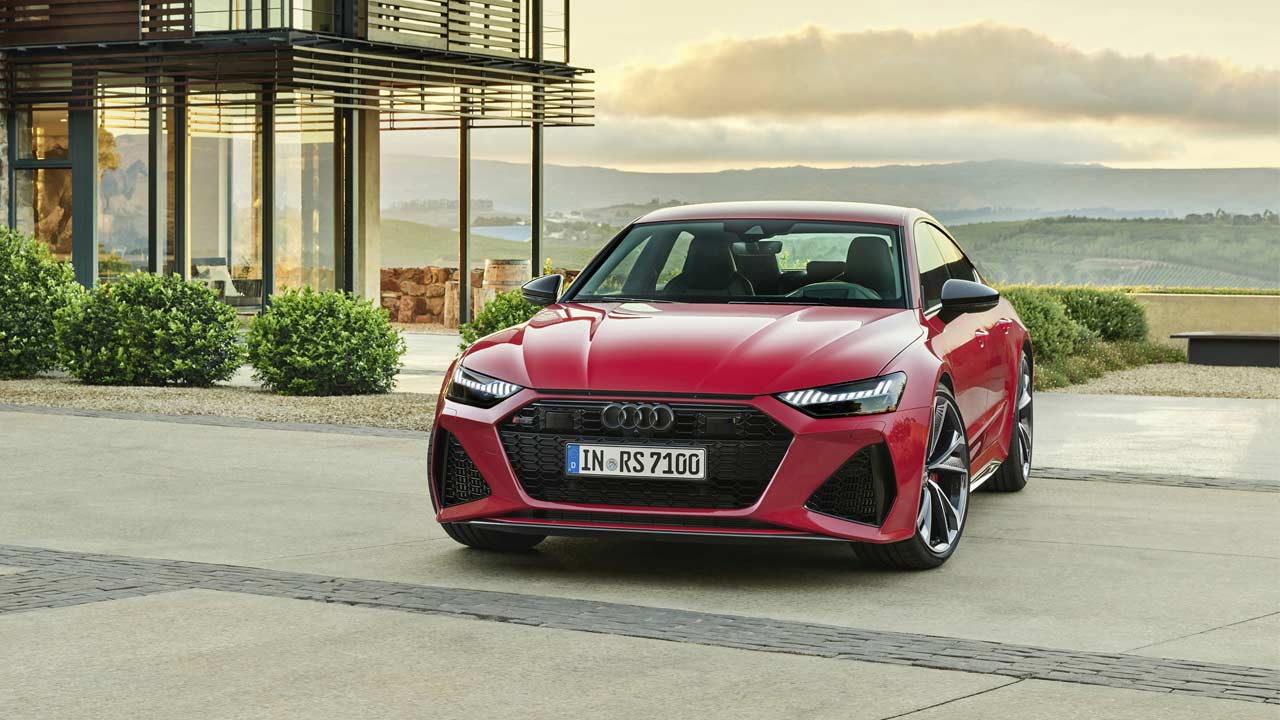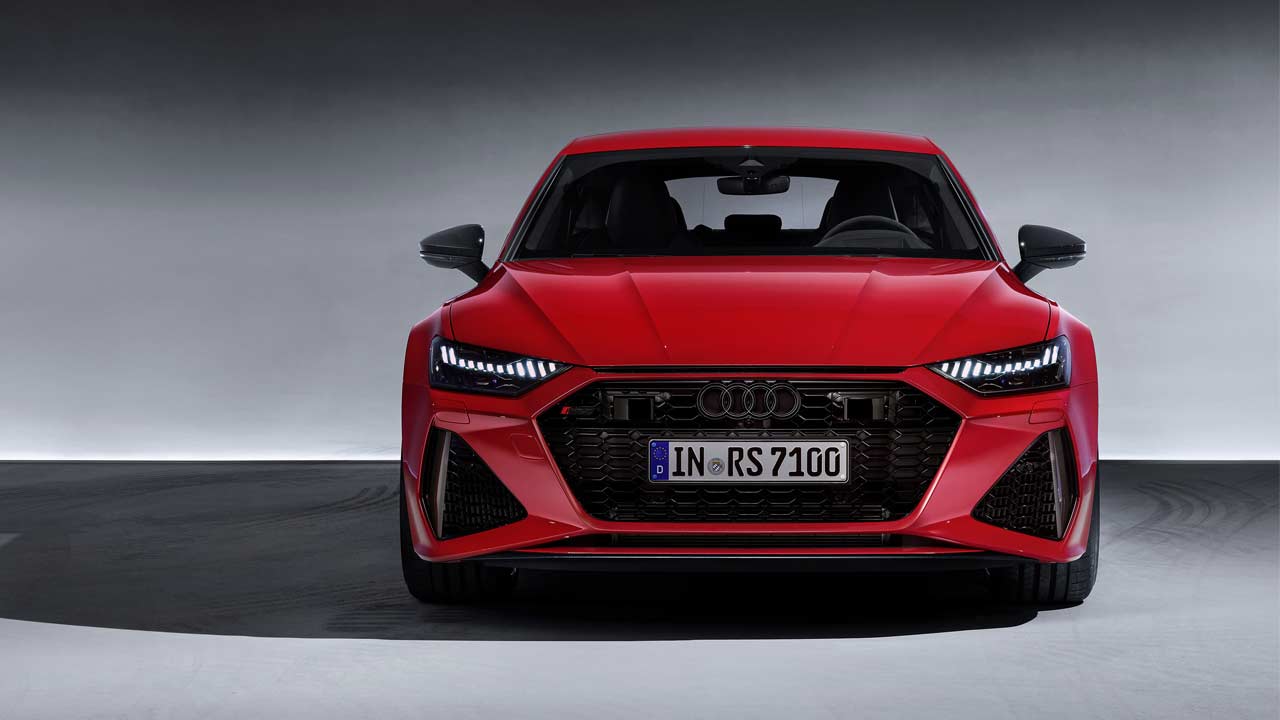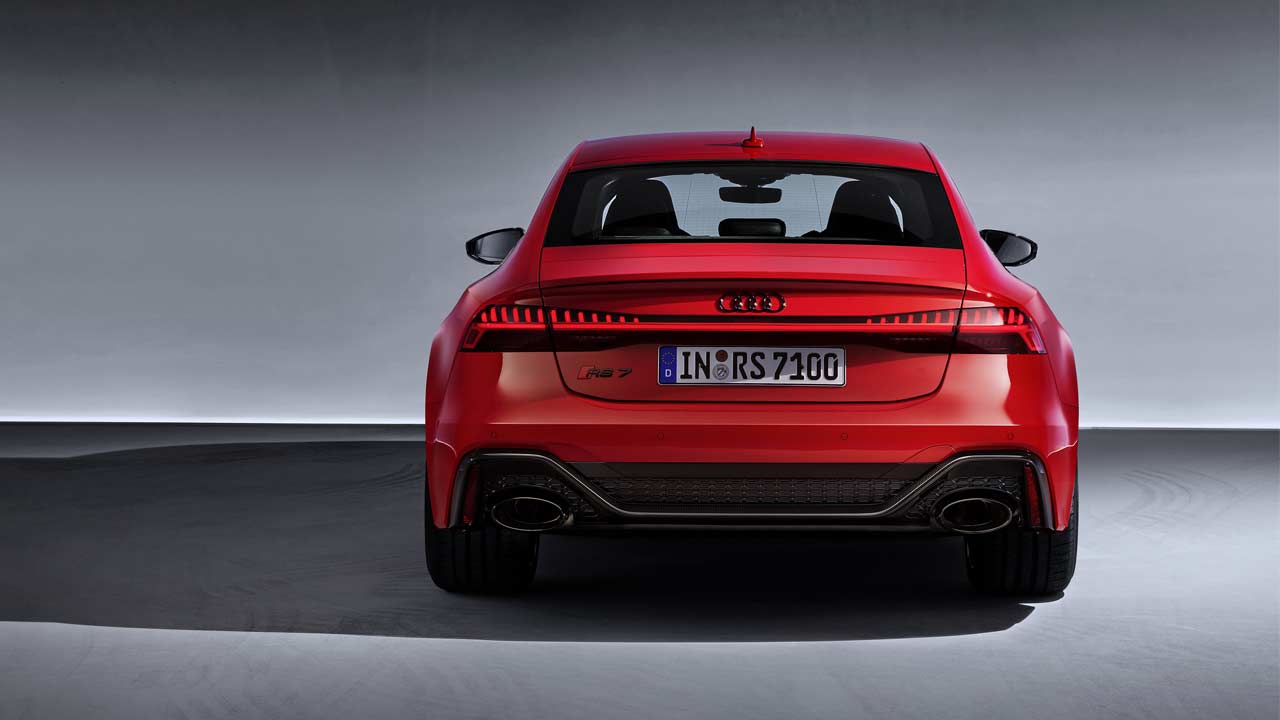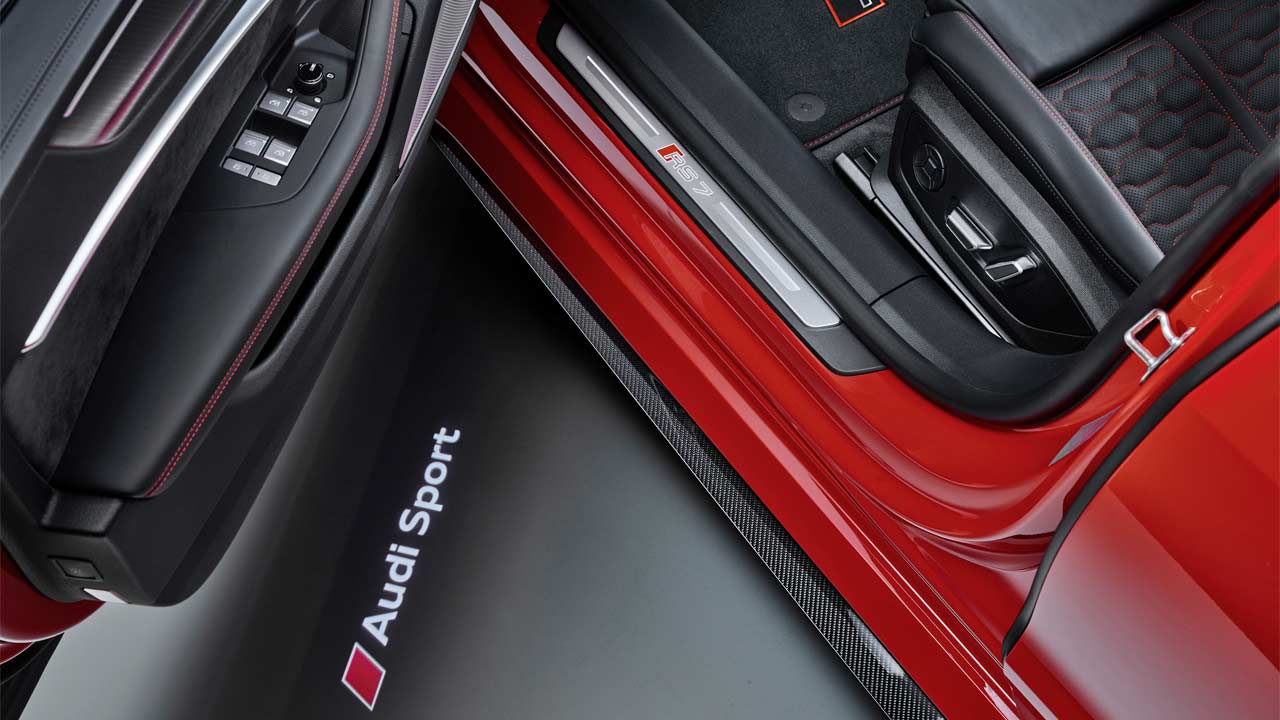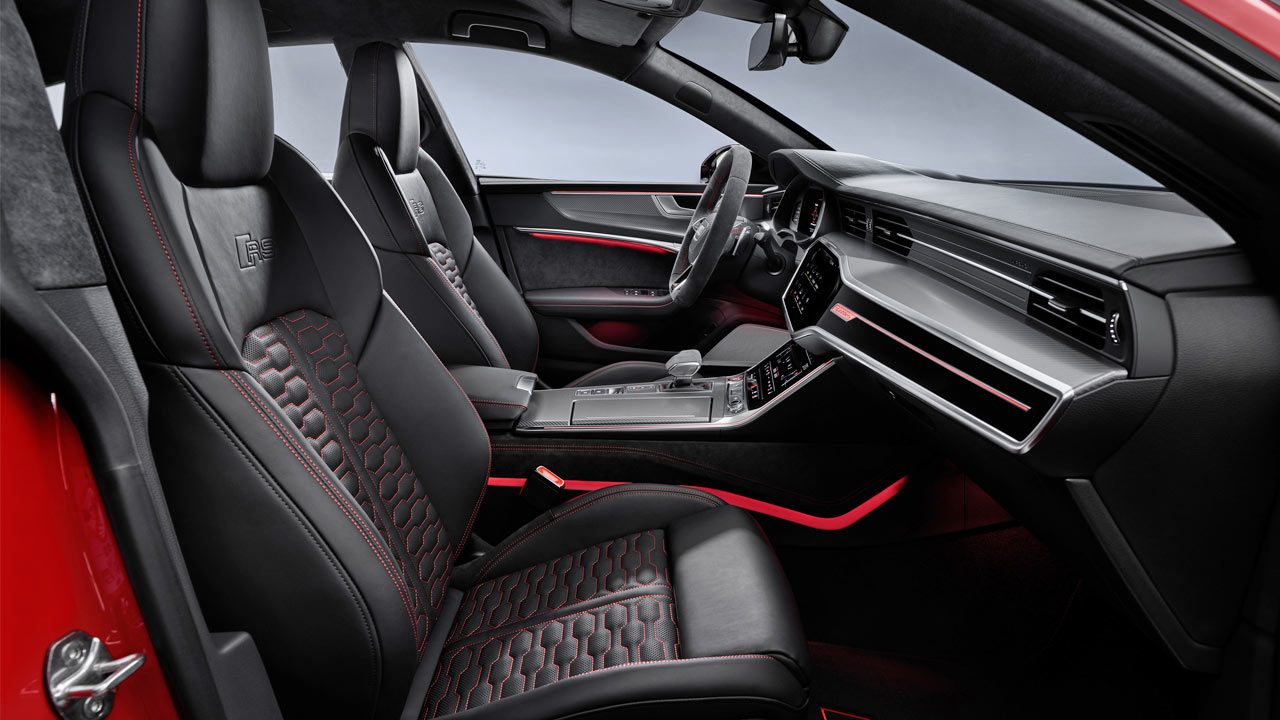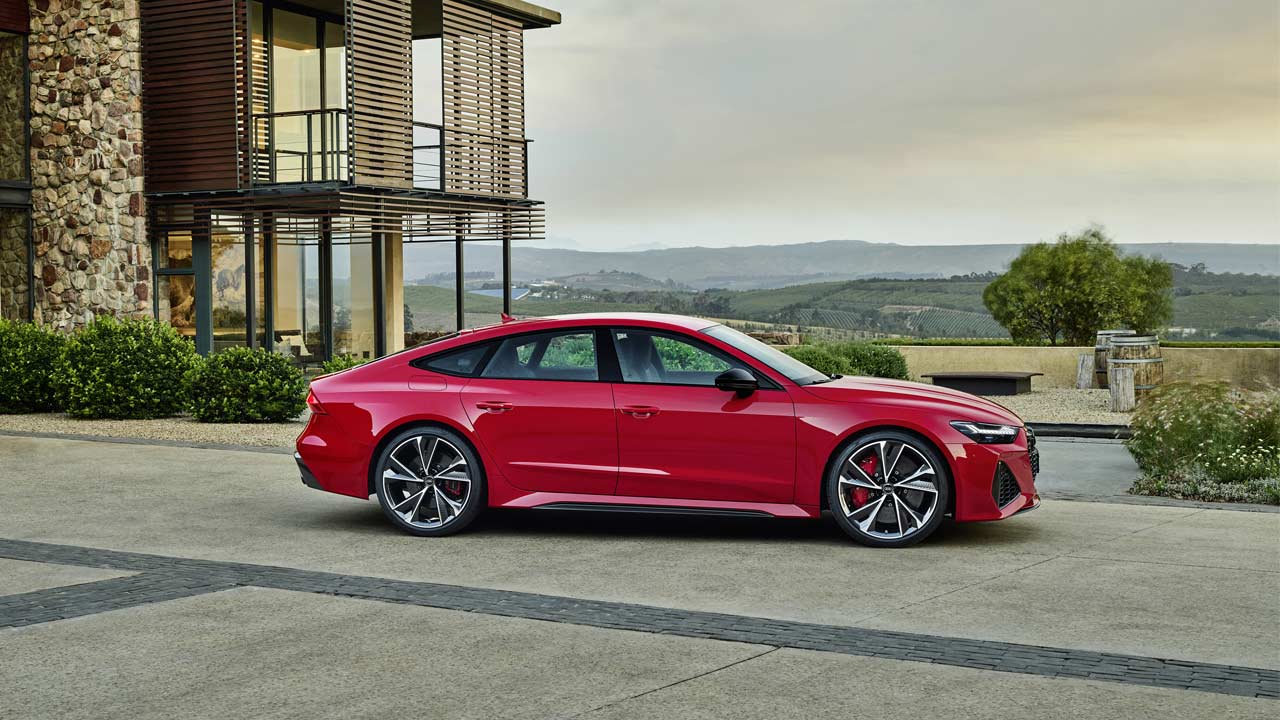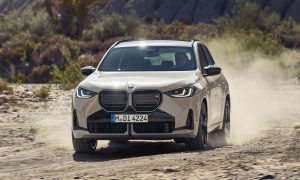Nearly two years after the debut of the second generation A7 Sportback, the new RS 7 Sportback is here with an even more angry looking face. The first thing that probably comes to your mind is the new RS 6 Avant that we saw recently, as the new RS 7 adopts the same design language.
The car has grown in dimensions. Measuring 1,950 mm at the front fenders, the RS 7 is significantly wider than the A7 Sportback, and so is the length of 5,009 mm. The face is nearly identical to the RS 6 Avant, with a flat Singleframe grille, 3 tiny slits above the grille, and large air intakes with vertical fins – the example here have them in carbon fibre. Perhaps, the most eye-catching part are the optional RS matrix LED laser headlights with dark bezels; they perform animations when the vehicle is locked or unlocked. As standard, the RS 7 Sportback comes with LED headlights.
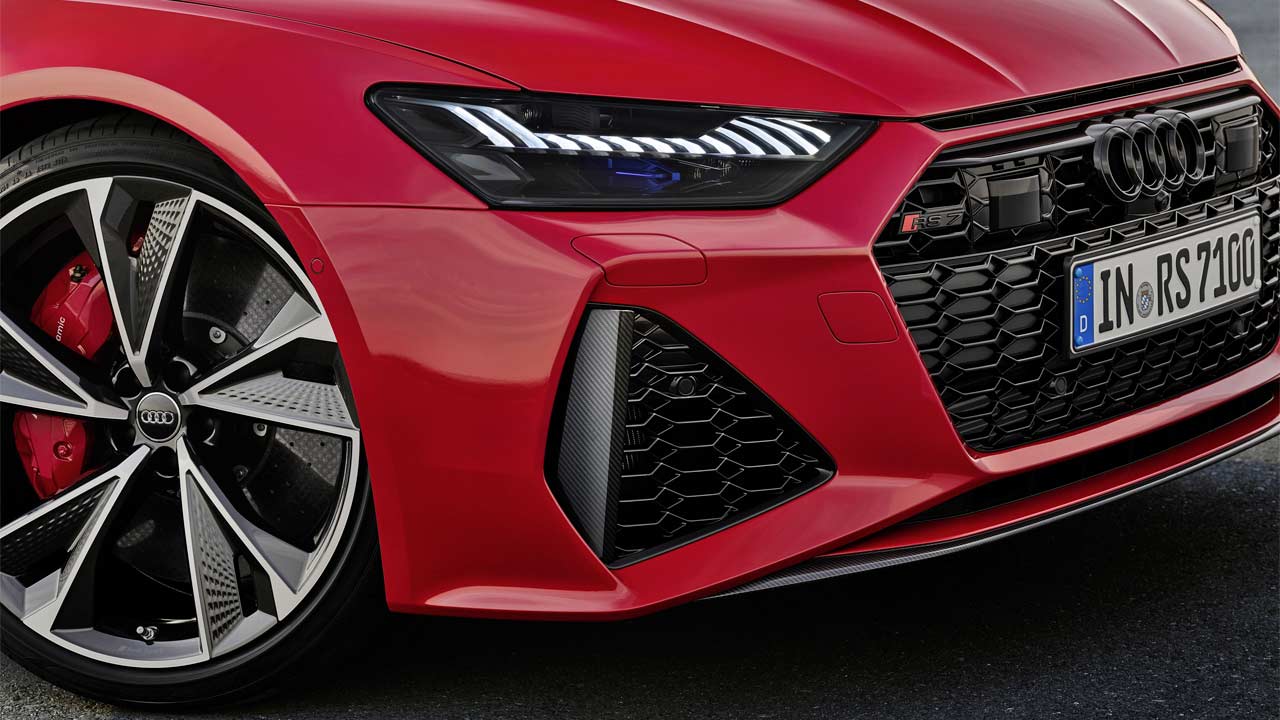
As standard, the RS 7 Sportback comes with 21-inch cast-aluminum wheels with a 10-spoke star design, while the example here is fitted with the optional 22-inch 5-V-spoke designed wheels, shod with 285/30 tires. The standard RS brake system gets 420 mm discs at the front and 370 mm at the rear, painted black as standard or red upon request. The optional RS ceramic brake discs measure 440 mm at the front and 370 mm at the rear; the calipers can be gray, red or blue. The optional brake system is 34 kg (75 lb) lighter than its steel counterpart, which cuts down on unsprung mass.
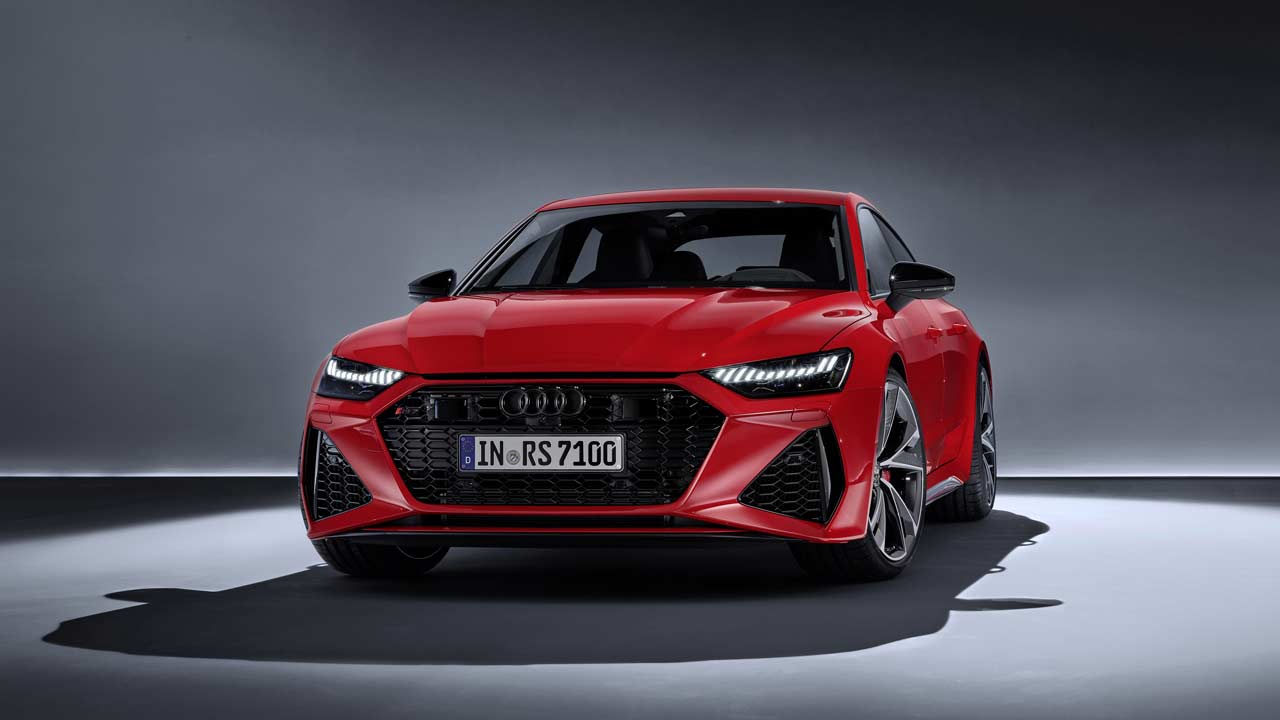
Buyers get to choose from 13 standard exterior paint finishes, including the two RS-specific shades of Nardo gray and Sebring black, as well as five optional matt paint finishes. The exterior mirror housings are gloss black as standard, with matt aluminum or in body color as options. Flaps, blades, sill inlays, window trims, and the rear diffuser clip can fall under one of the three styling packages in matt aluminum, black, or carbon. Upon request, the Audi rings and RS logos at the front and rear are also available in gloss black (for the black and carbon styling packages).
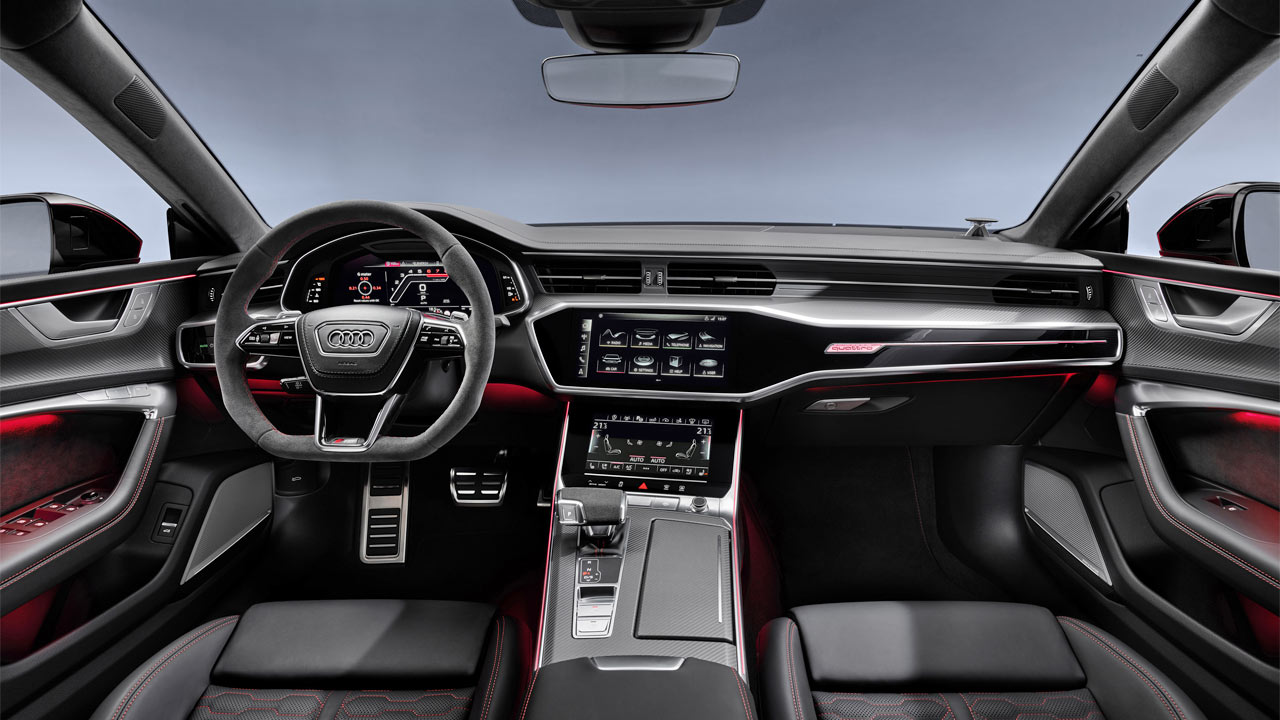
While the interior layout looks familiar compared to the latest Audis, there are generous red contrasting to remind the driver that this is a special Audi. Features include flat-bottomed, perforated RS sport leather steering wheel with aluminum shift paddles, RS sport seats upholstered with black pearl Nappa leather with rhombus pattern and RS embossing, or the optional RS sport seats covered with Valcona leather, featuring a honeycomb pattern and RS embossing. The Audi virtual cockpit gets RS-specific graphics.
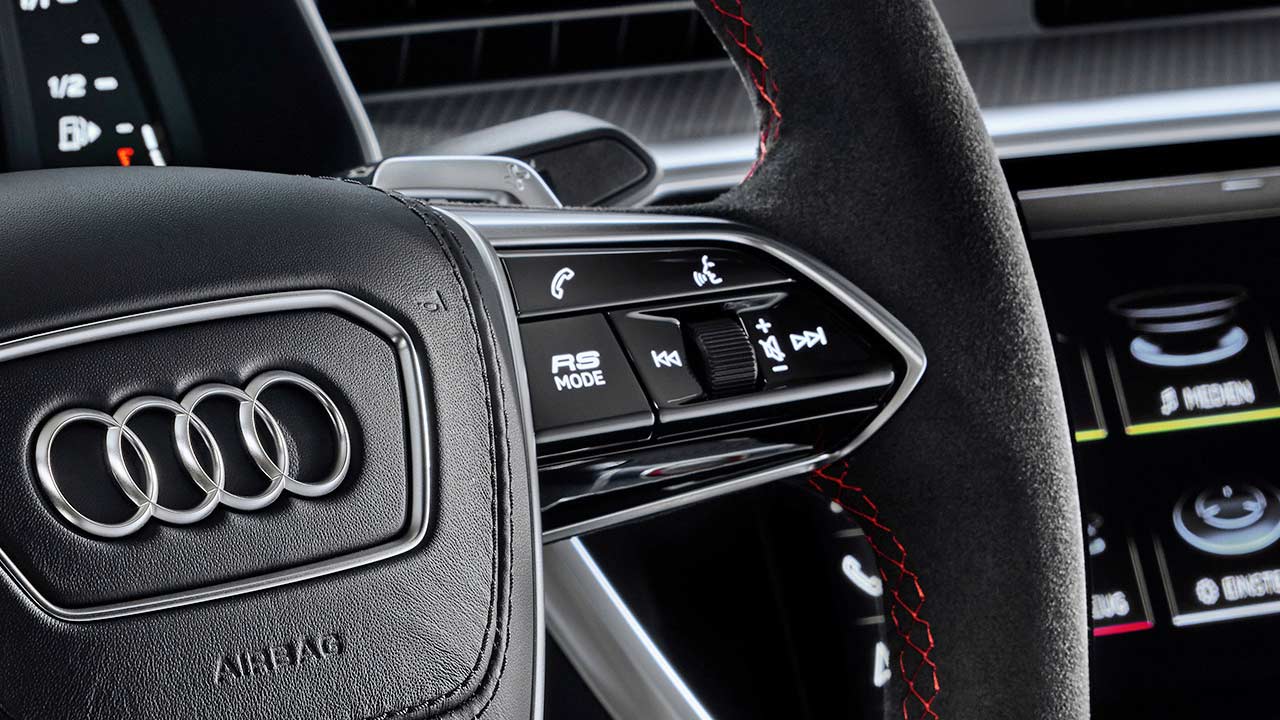
The aforementioned aluminum shift paddles feature multifunction buttons, which enables the new RS1 and RS2 Audi drive select modes, which are driver customizable. They can be enabled directly via the RS Mode button on the steering wheel. The Audi drive select system influences the engine and transmission management, steering, suspension, dynamic all-wheel steering, quattro sport differential, and the exhaust flaps. In RS2 mode, drivers can switch the Electronic Stabilization Control (ESC) to sport mode, Audi said.
As for the suspension system, the linkages and the subframes are made largely of aluminum. The new RS 7 gets adaptive air suspension with controlled damping as standard; it gets a new air spring module with 50 percent higher spring rate. The air suspension can be set to three modes and includes automatic level control. In the normal position, the body sits 20 mm (0.8 in) lower than the A7 Sportback with standard suspension. At speeds above 120 km/h (74.6 mph), it will drop by a further 10 mm and offers a lift mode enabling the vehicle to be raised by 20 mm if needed.
The optional RS sport suspension plus with Dynamic Ride Control (DRC) is claimed to hold the RS 7 Sportback even more tightly to the road and improves handling. Pitching and rolling movements are significantly reduced during spirited driving, Audi said.
Progressive steering with sporty and direct ratios is standard, while the aforementioned dynamic all-wheel steering is optional. At intermediate and high speeds, the rear wheels turn by as much as two degrees in the same direction, keeping the car steady in its lane.
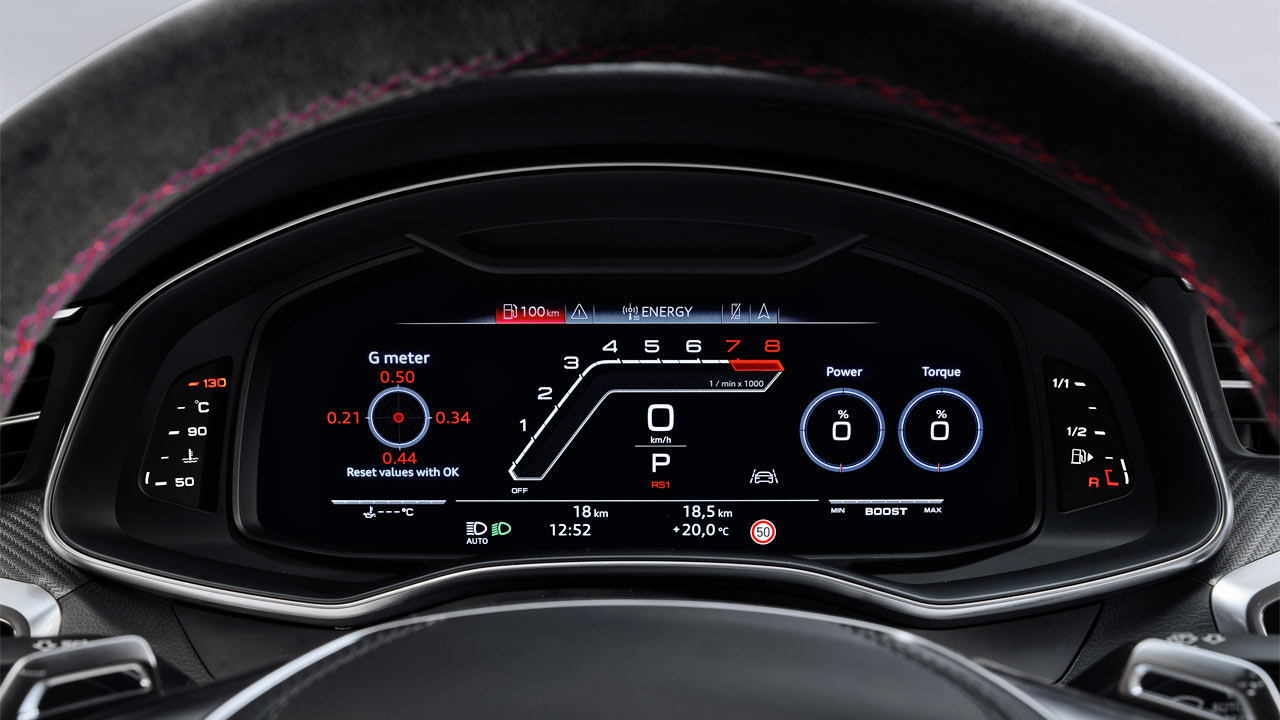
Now comes the business end of the story. The new RS 7 Sportback is powered by a 4.0L V8 twin-turbo TFSI motor with mild-hybrid technology. The combustion engine delivers 441 kW (600 metric hp), and 800 Nm (590 lb-ft) of torque within a range from 2,050 to 4,500 rpm. A 0 – 100 km/h acceleration is claimed to happen in 3.6 seconds, while the top speed is limited to 250 km/h. However, this can be increased to 280 km/h (174 mph) with the Dynamic package and to 305 km/h (189.5 mph) with the Dynamic plus package.
There’s the cylinder on demand (COD) system as well. In higher gears at low to medium loads and engine speeds, it will deactivate cylinders 2, 3, 5, and 8 by halting injection and ignition and closing the intake and exhaust valves. When the driver floors the accelerator pedal, they are reactivated immediately.
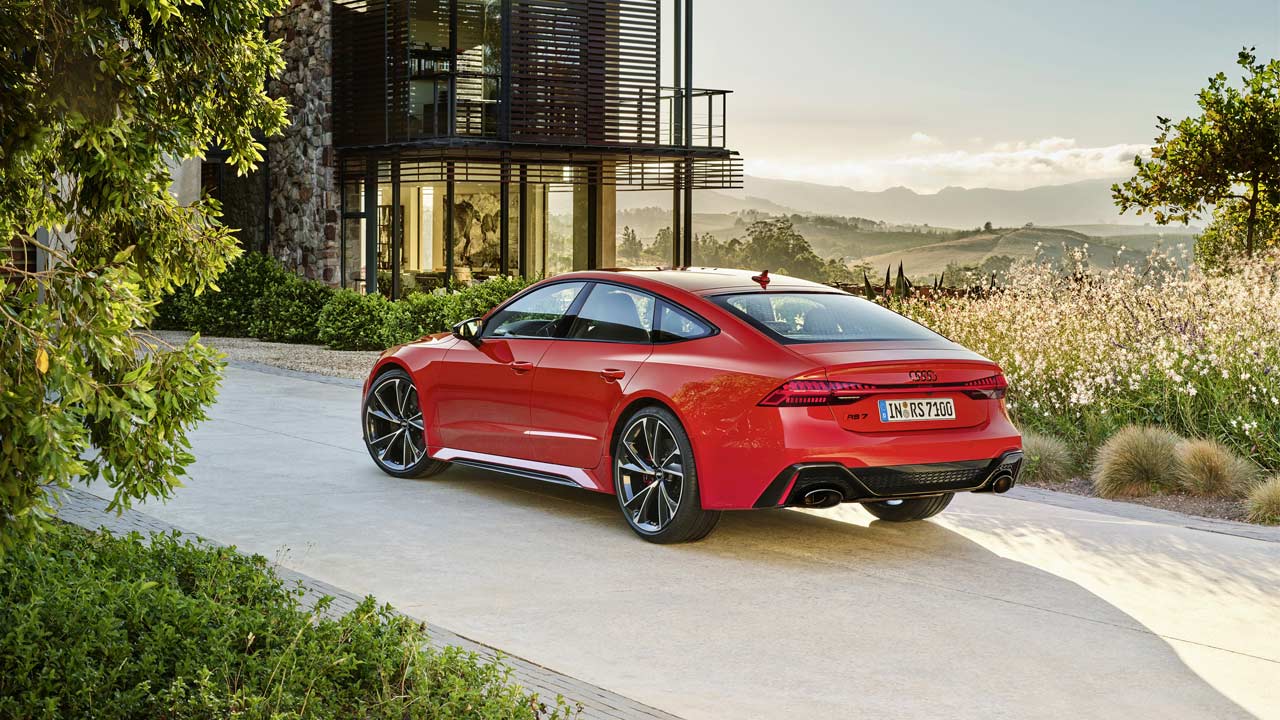
The 48-volt mild-hybrid system’s belt alternator starter can recover up to 12 kW power under gentle acceleration and feed it into the lithium-ion battery. If the driver releases the accelerator at speeds between 55 and 160 km/h (34.2 to 99.4 mph), the drive management will select one of two options. Depending on the driving situation and the settings in Audi drive select, the RS 7 will either recover energy or coast with the engine switched off.
Sending power to all four wheels via quattro permanent AWD system is an 8-speed automatic transmission with optimized shift times. Drive forces are distributed to the front and rear axles in a 40:60 ratio via mechanical center differential. If one wheel slips, more drive torque automatically goes to the axle with the better traction. Up to 70 percent can flow to the front wheels and up to 85 percent to the back wheels.
The new RS 7 Sportback will be arriving at dealerships in Germany and other European countries at the end of 2019.

Leave a Reply
Note: Comments that are unrelated to the post above get automatically filtered into the trash bin.
